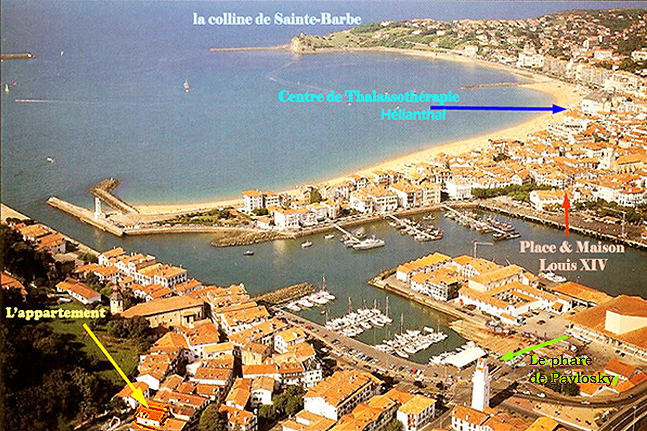From the Attic, to 90 meters, in direction of the port, we meet the quay Ravel, where there is the native house,
of Dutch type (with arches & bricks, made in 1636), of the musician Maurice Ravel.
Later, although he came often
to the town, it could not stay there, since his parents had rented.it.
Ravel spoke fluently the Basque,
as his mother ("this expensive silent presence that was wrapping me with his infinite tenderness"),
who had met the Ravel father,
Swiss engineer, when this one came to work because of the railroad construction Irún-Madrid.
In 150 meters from here there is a beautiful house of glazed front, home of a ex-French minister
(who was a mayoress of Saint-Jean-de-Luz), now as renting flat for weeks (by Interhome).
The visit of the Church Saint-Vincent (XVIth Century) is very advisable, where it was baptized Ravel, and it's just behind,
with his belfry of oriental type. Made of beautiful alterpieces and wooden floor, it's of the unique Basque ancient style.
This town is known too for the special quality of its light, which is limpid, and delicately tinted gold. The shadows dance with light and color.
Exactly next to the city hall is the Tourist information Office,
where
they offer all kinds of leaflets & brochures with information of the town and his surroundings.
[Intro a Ravel, by the Labèque sisters] [Pavane pour une infante défunte] (Central Oil, by Natacha Best, 1999)
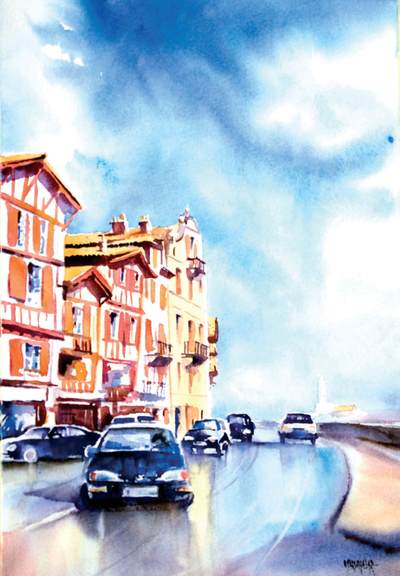
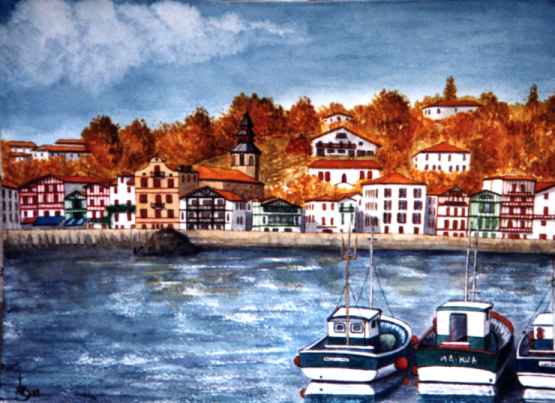
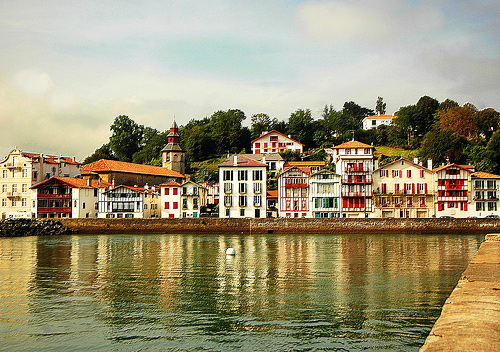
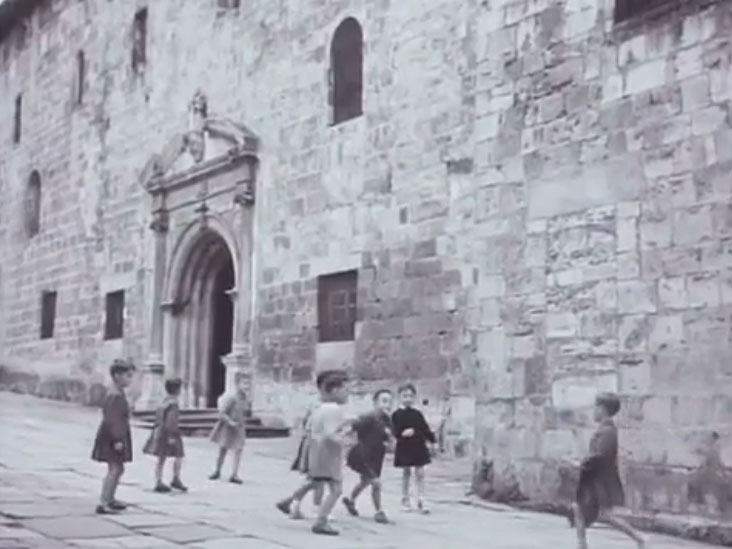


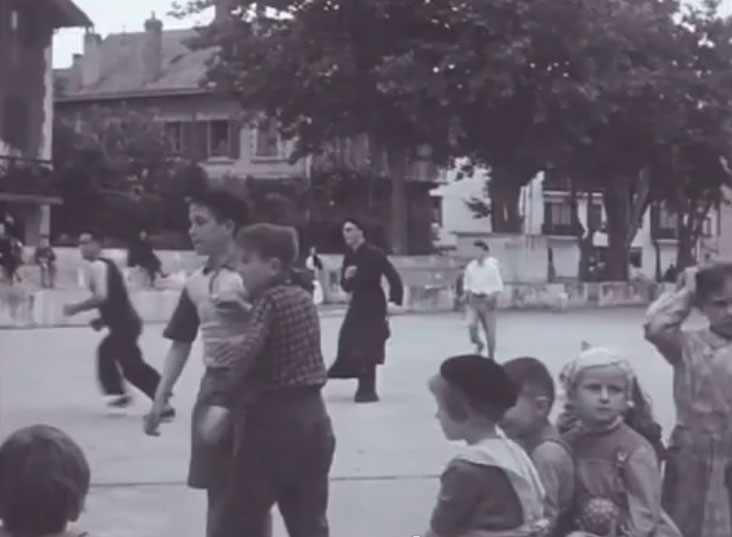
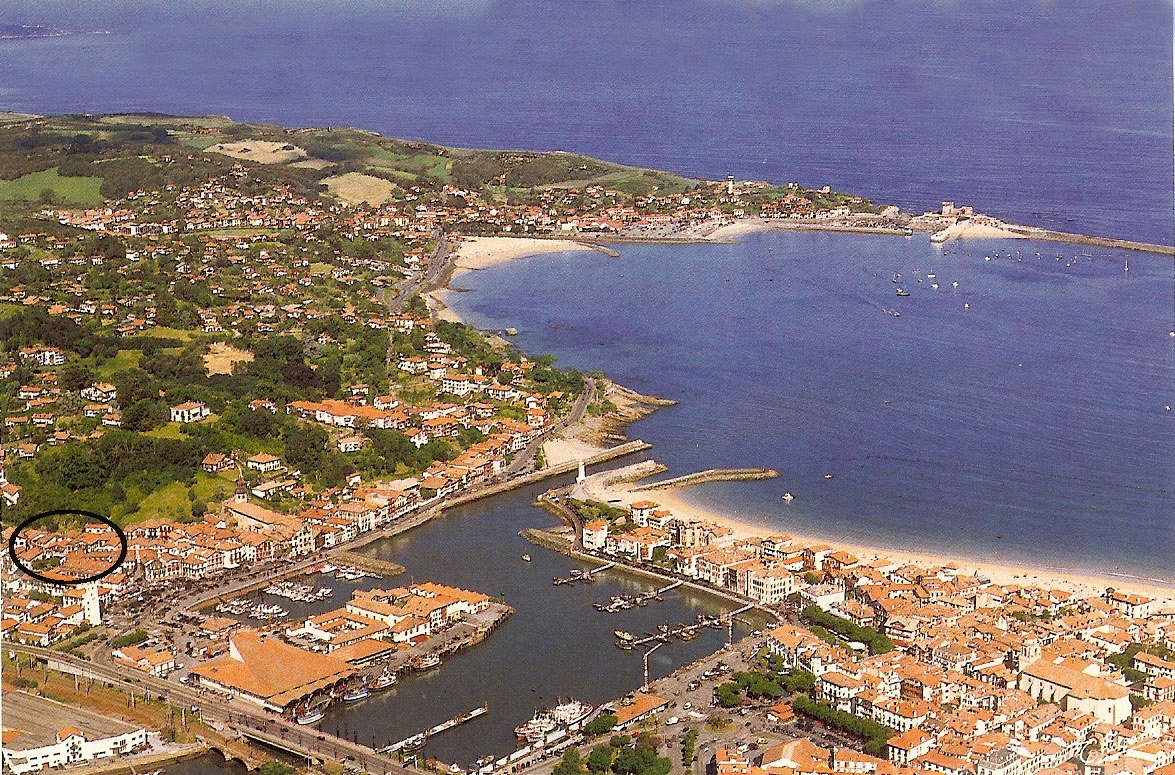
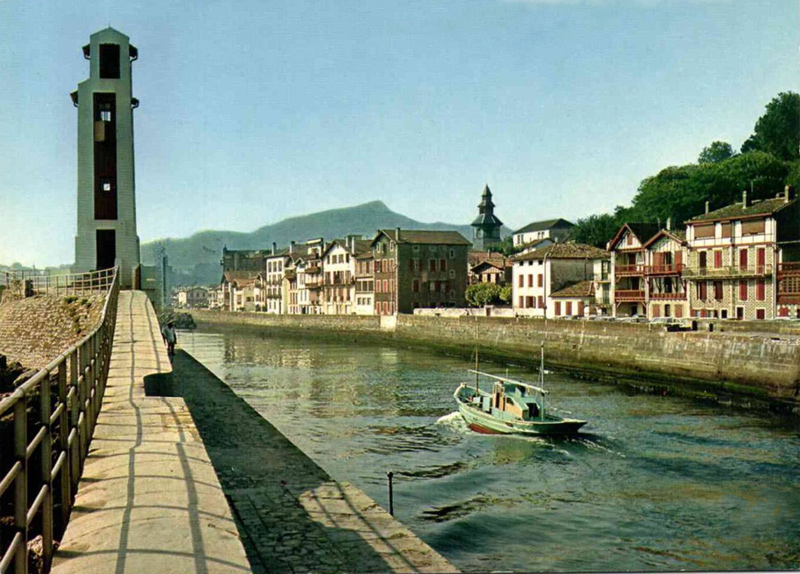

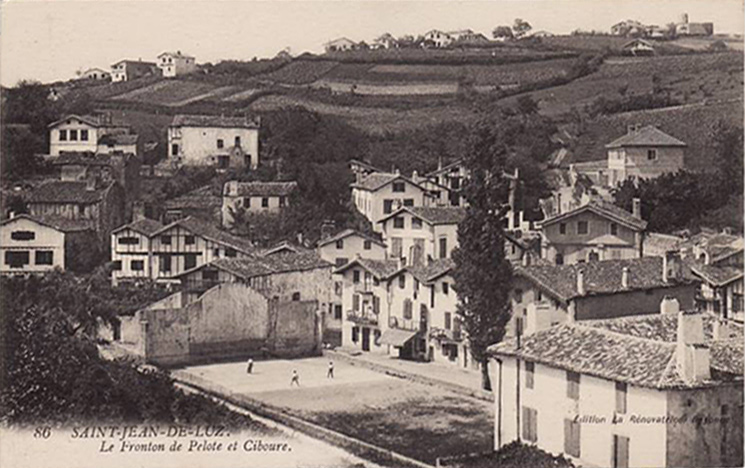
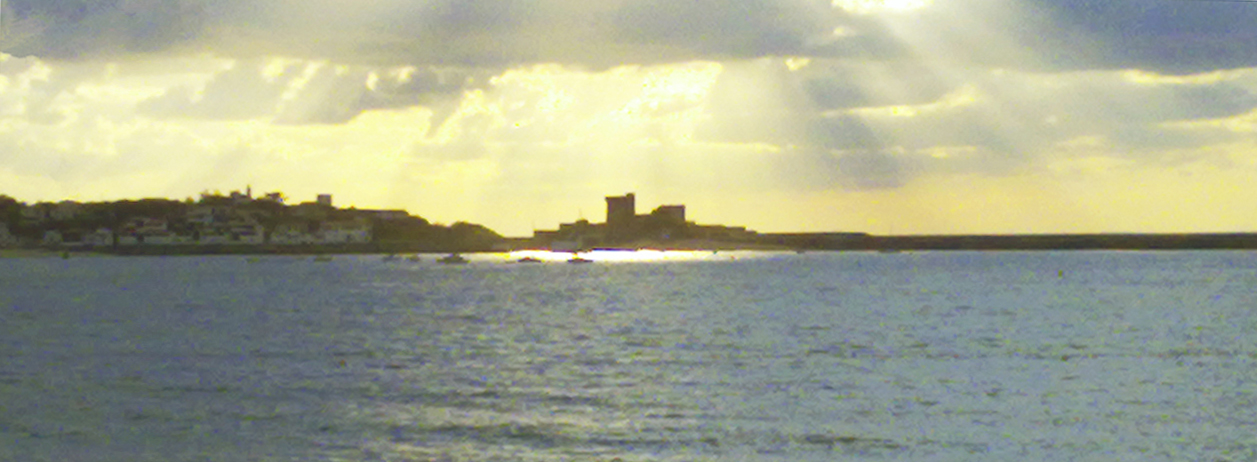

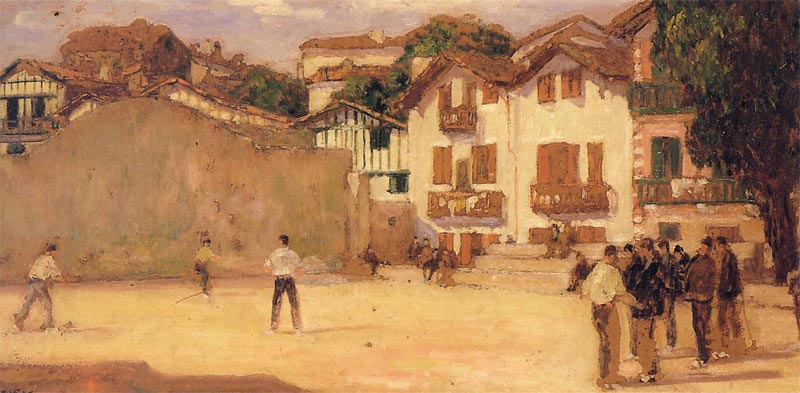
.jpg)
